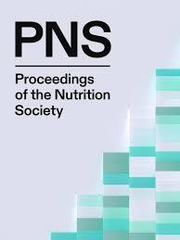No CrossRef data available.
Article contents
The predictors of drop out for night shift workers randomised to three different dietary weight loss interventions: a mixed methods study
Published online by Cambridge University Press: 21 May 2025
Abstract
Approximately 15% of Australia’s workforce are shift workers, who are at greater risk for obesity and related conditions, such as type 2 diabetes and cardiovascular disease.(1,2,3) While current guidelines for obesity management prioritise diet-induced weight loss as a treatment option, there are limited weight-loss studies involving night shift workers and no current exploration of the factors associated with engagement in weight-loss interventions. The Shifting Weight using Intermittent Fasting in night shift workers (SWIFt) study was a randomised controlled trial that compared three, 24-week weight-loss interventions: continuous energy restriction (CER), and 500-calorie intermittent fasting (IF) for 2-days per week; either during the day (IF:2D), or the night shift (IF:2N). This current study provided a convergent, mixed methods, experimental design to: 1) explore the relationship between participant characteristics, dietary intervention group and time to drop out for the SWIFt study (quantitative); and 2) understand why some participants are more likely to drop out of the intervention (qualitative). Participant characteristics included age, gender, ethnicity, occupation, shift schedule, number of night shifts per four weeks, number of years in shift work, weight at baseline, weight change at four weeks, and quality of life at baseline. A Cox regression model was used to specify time to drop out from the intervention as the dependent variable and purposive selection was used to determine predictors for the model. Semi-structured interviews at baseline and 24-weeks were conducted and audio diaries every two weeks were collected from participants using a maximum variation sampling approach, and analysed using the five steps of framework analysis.(4) A total of 250 participants were randomised to the study between October 2019 and February 2022. Two participants were excluded from analysis due to retrospective ineligibility. Twenty-nine percent (n = 71) of participants dropped out of the study over the 24-week intervention. Greater weight at baseline, fewer years working shift work, lower weight change at four weeks, and women compared to men were associated with a significant increased rate of drop out from the study (p < 0.05). Forty-seven interviews from 33 participants were conducted and 18 participants completed audio diaries. Lack of time, fatigue and emotional eating were barriers more frequently reported by women. Participants with a higher weight at baseline more frequently reported fatigue and emotional eating barriers, and limited guidance on non-fasting days as a barrier for the IF interventions. This study provides important considerations for refining shift-worker weight-loss interventions for future implementation in order to increase engagement and mitigate the adverse health risks experienced by this essential workforce.
Information
- Type
- Abstract
- Information
- Copyright
- © The Author(s), 2025. Published by Cambridge University Press on behalf of The Nutrition Society


